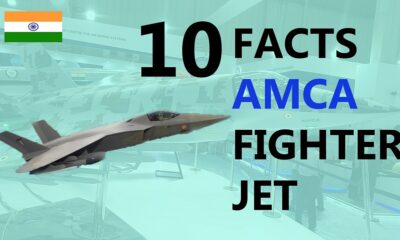Aviation
What makes Dassaults Rafale fighter jet so special?
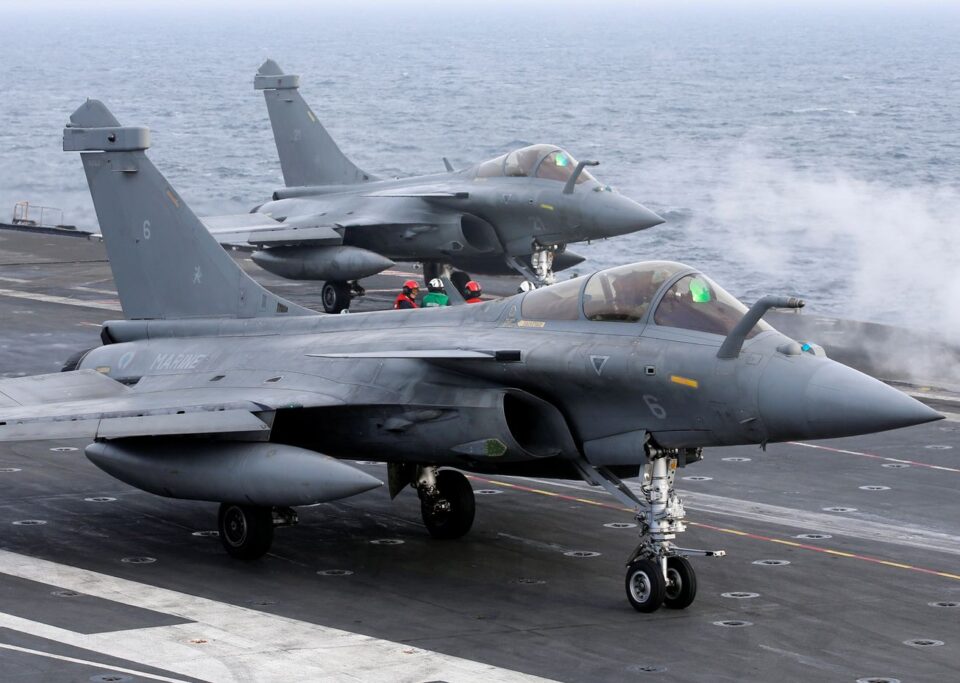
What makes Dassaults Rafale fighter jet so special? : Over the last decades, air forces have always been the first military component engaged in all crises or conflicts, from the Falklands to the Gulf, from Bosnia to Kosovo, from Afghanistan to Libya, and more recently Mali, the Central African Republic, Iraq and Syria.
Military aviation is undoubtedly the most strategic weapon today, both in terms of combat effectiveness and of critical technologies implemented.
In modern warfare, air dominance from day one is a must, so that air-to-ground and air-to-sea operations can be conducted safely and efficiently.
In the course of asymmetrical and counter-insurgency conflicts, the air arm also remains at the forefront of the military effort, its flexibility and firing power helping ensure that allied forces prevail.
The Rafale, a fully “Omnirole” fighter, is available in three variants:
- the Rafale C single-seater operated from land bases,
- the Rafale M single-seater for carrier operations,
- the Rafale B two-seater flown from land bases.
All three variants share a common airframe and a common mission system, the differences between naval and land versions being mainly limited to the undercarriage and to the arresting hook.
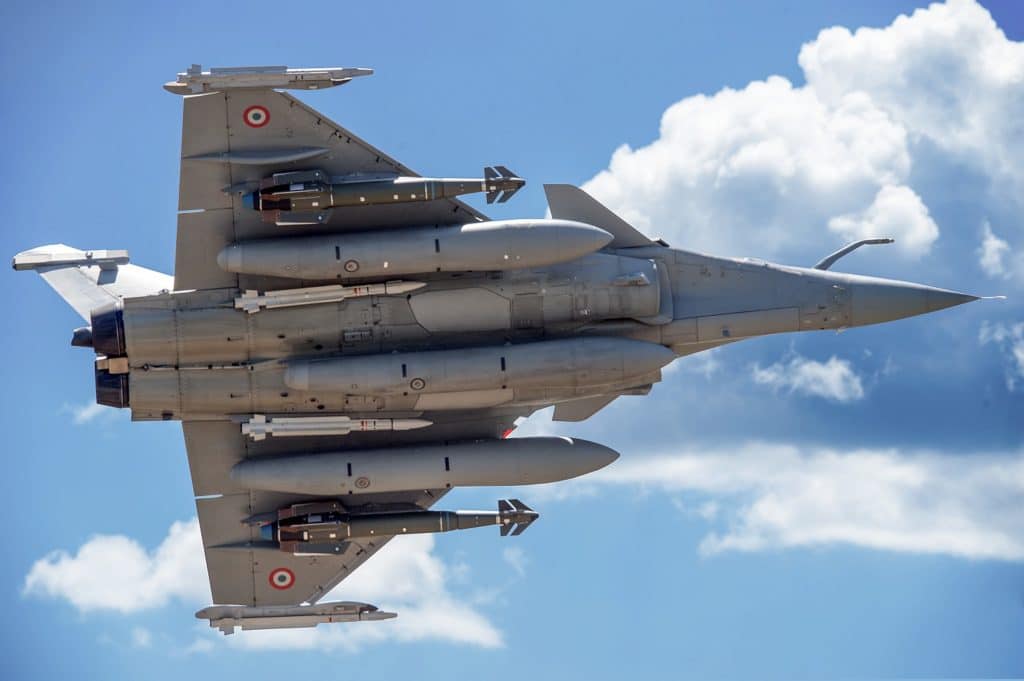
OMNIROLE BY DESIGN
When the Rafale programme was launched, the French Air Force and French Navy published a joint requirement for an omnirole aircraft that would have to replace the seven types of combat aircraft then in operation.
The new aircraft would have to be able to carry out a very wide range of missions:
- Air-defense / air-superiority,
- Anti-Access/Aera Denial,
- Reconnaissance,
- Close air support,
- Dynamic Targeting,
- Air-to-ground precision strike / interdiction,
- Anti-ship attacks,
- Nuclear deterrence,
- buddy-buddy refuelling.
A WIDE RANGE OF SMART AND DISCRETE SENSORS
What makes the essential difference is the Rafale’s “multi-sensor data fusion” process running on data provided by all the sensors of the aircraft.
In essence, the “multi-sensor data fusion” concept implemented into the Rafale allows the pilot to act as a true “tactical decision maker”, rather than being only a sensor operator.
The core of these enhanced capabilities of the RAFALE lies in a “Modular Data Processing Unit” (MDPU) incorporating “commercial off the shelf” (COTS) elements. It is composed of up to 19 flight “line-replaceable units” (LRUs), with 18 of them individually providing 50 times the processing power of a typical mission computer employed in previous generation fighters.
The MDPU is the cornerstone of the upgradeability of the Rafale. It allows a seamless integration of new weapons and new capabilities to maintain the warfighting relevance of the Rafale over the years as tactical requirements evolve, and as the computer industry keeps rolling out new generations of processors and software.
The “multi-sensor data fusion” provides a link between the battlespace surrounding the aircraft and the pilot’s brain with its unique ability to grasp the outcome of tactical situations and make sensible decisions.
things on the computing power of the MDPU to process data from the RBE2-AESA radar, the “Front Sector Optronic” (FSO) system, the SPECTRA EW system, the IFF, the MICA infrared seekers, and the data link.
It is a full automated process carried out in three steps:
- Establishing consolidated track files and refining primary information provided by the sensors,
- Overcoming individual sensor limitations related to wavelength / frequency, field of regard, angular and distance resolution, etc, by sharing track information received from all the sensors,
- Assessing the confidence level of consolidated tracks, suppressing redundant track symbols and decluttering the displays.
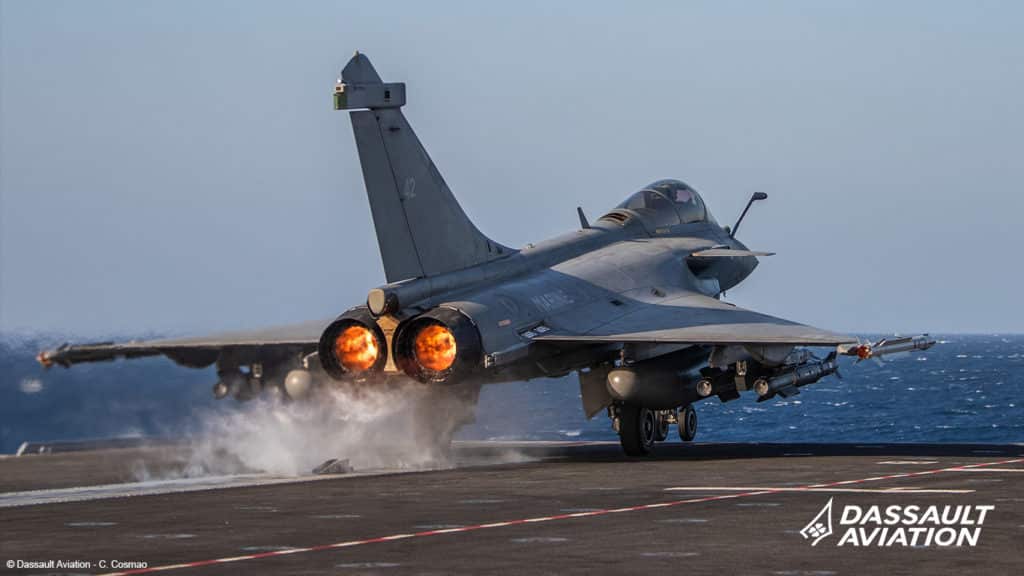
A FULLY OPTIMIZED AIRFRAME
The Rafale features a delta wing with close-coupled canards. In-house research in computational fluid dynamics has shown the specific benefits of close coupling between the wings and the canards: it ensures a wide range of centre of gravity positions for all flight conditions, as well as excellent handling throughout the whole flight envelope.
The close-coupled canards / delta wing configuration is key to the combat performance of the Rafale: even at high angle-of-attack, it remains fully agile, and its range performance in strike missions with heavy weapon loads is unmatched for such a compact design.
Read more : 12 things to know about Airbus A320 family
An advanced digital “Fly-by-Wire” (FBW) Flight Control System (FCS) provides for longitudinal stability and superior handling performance. The FCS is quadruple redundant with three digital channels and one separately designed analogue channel, with no mechanical back-up: design independence between channels is key to avoiding simultaneous anomalies on all channels.
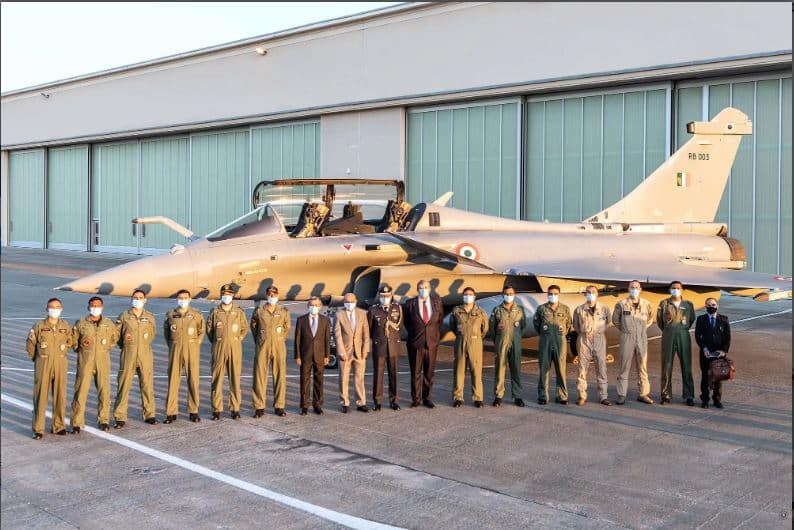
THE M88 – A NEW GENERATION ENGINE
The M88-2 is a new-generation turbofan engine offering a high thrust-to-weight ratio with easy maintainability, high despatch reliability and lower operating costs.
The M88-2 incorporates advanced technologies such as integrally bladed compressor disks (“blisks”), a low-pollution combustor with smoke-free emissions, single-crystal high-pressure turbine blades, ceramic coatings, and composite materials.
Read more : Is China’s COMAC C919 better than B737max and A319neo ?
The M88-2 power plant is rated at 10,971 lbs dry and 16,620 lbs with afterburner. It is equipped with redundant “Full Authority Digital Engine Control” (FADEC), which provides for carefree engine handling anywhere in the flight envelope: the throttle can be slammed from combat power to idle and back to combat power again, with less than three seconds from idle to full afterburner.
Launched in 2008, the M88 TCO (“Total Cost of Ownership”) programme was initiated to further improve engine durability and bring support costs down. Capitalizing on the ECO project, Safran Aircraft Engines was able to upgrade the high-pressure compressor and the high-pressure turbine of the M88-2: cooling is ameliorated and stronger components have been introduced, boosting durability by up to 50%. Life expectancy between overhaul has been considerably expanded for a number of modules, helping further minimise the impact of planned maintenance on engine availability.
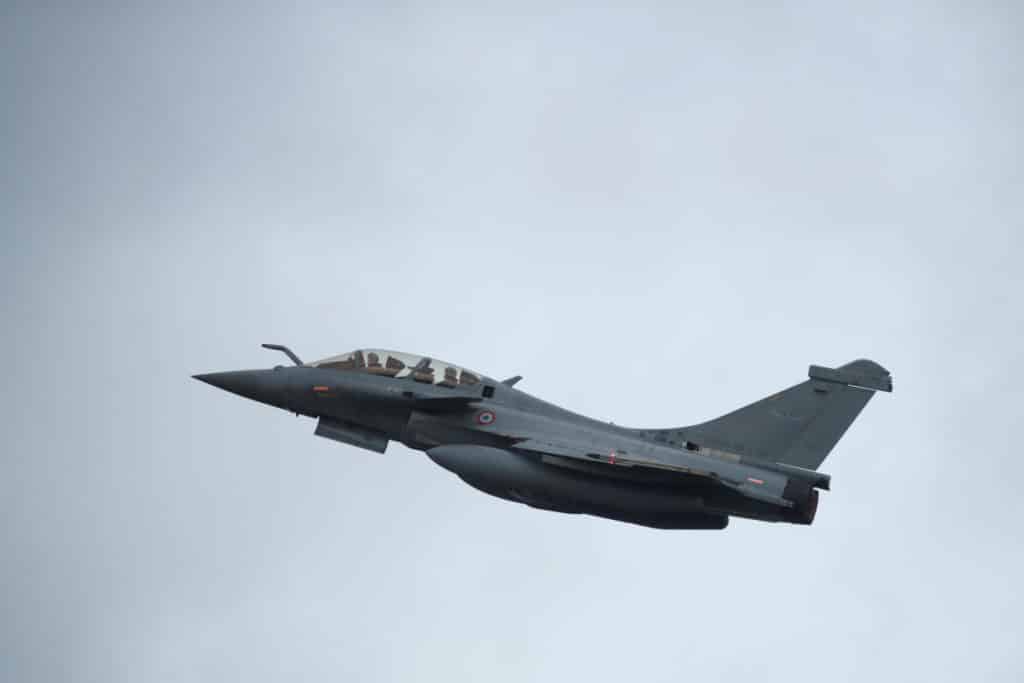
A UNIQUE MAN-MACHINE INTERFACE (MMI)
Dassault Aviation has developed a very easy to use pilot interface (MMI), combining the “Hands on Throttle and Stick” (HOTAS) control concept with touch screens. It relies on a highly integrated suite of equipment with the following capabilities:
- For short-term actions, head-up flying using a wide-field-of-view holographic “Head-up Display” (HUD),
- For medium and long-term actions, analysis of the tactical situation as a whole (the “big picture”), using a multi-image “Head-Level Display” (HLD). The HLD picture is focused at the same distance as the HUD picture to allow for fast eye transitions between head-up and head-down displays and the external world’s view,
- Management of system resources via the left and right color touch screens.
The comprehensive design of the cockpit provides for everything that aircrews can expect from an “OMNIROLE” fighter: a wide field of view at the front, on both sides, and at the rear, a superior agility, an increased G-protection with 29° tilted seats, and an efficient air conditioning system demonstrated under all climates.
RAFALE DEPLOYMENT HISTORY
Four batches of 13, 48, 59 and 60 aircraft have been ordered by the French MoD, totaling 132 aircraft for the French Air Force (63 Rafale B two-seaters and 69 Rafale C single-seaters) and 48 Rafale M naval single-seaters for the French Navy. Egypt, Qatar and India have signed contracts for respectively 24, 24 and 36 Rafales, bringing firm orders to 264 aircraft. By the end of April 2017, no less than 148 Rafales had been delivered to the Armée de l’Air and the French Navy while a further nine had been built for Egypt.
Capabilities are developed incrementally, and released in packages (“standards”). The first release (standard F1) featured only air-to-air capabilities. It became operational in 2004 with the French Navy on Rafales launched from the Charles de Gaulle nuclear aircraft-carrier during operation “Enduring Freedom”.
The second capability release (standard F2) entered service in the French Air Force and in the French Navy in 2006. It provided the Rafale with its true “Omnirole” capability for air-to-air and air-to-ground missions.
General characteristics
- Crew: 1 or 2
- Length: 15.27 m (50 ft 1 in)
- Wingspan: 10.90 m (35 ft 9 in)
- Height: 5.34 m (17 ft 6 in)
- Wing area: 45.7 m2 (492 sq ft)
- Empty weight: 10,300 kg (22,708 lb) (B)
9,850 kilograms (21,720 lb) (C)10,600 kilograms (23,400 lb) (M)
- Gross weight: 15,000 kg (33,069 lb)
- Max takeoff weight: 24,500 kg (54,013 lb)
- Fuel capacity: 4,700 kg (10,362 lb) internal for single-seater (C); 4,400 kg (9,700 lb) for two-seater (B)
- Maximum fuel: (C): 16,550 l (4,370 US gal; 3,640 imp gal) (5,750 l (1,520 US gal; 1,260 imp gal) internal + 2,300 l (610 US gal; 510 imp gal) in 2x conformal tanks + 8,500 l (2,200 US gal; 1,900 imp gal) in 5 drop tanks)
- Powerplant: 2 × Snecma M88-2 turbofans, 50.04 kN (11,250 lbf) thrust each dry, 75 kN (17,000 lbf) with afterburner
Performance
- Maximum speed: 2,223 km/h (1,381 mph, 1,200 kn) / Mach 1.8 at high altitude
1,390 km/h, 860 mph, 750 kn / Mach 1.1 at low altitude
- Supercruise: Mach 1.4
- Combat range: 1,850 km (1,150 mi, 1,000 nmi) on penetration mission with three tanks (5,700 L), two SCALP-EG and two MICA AAMs.
- Ferry range: 3,700 km (2,300 mi, 2,000 nmi) with 3 drop tanks
- Service ceiling: 15,835 m (51,952 ft)
- g limits: +9 −3.6 (+11 in emergencies)
- Rate of climb: 304.8 m/s (60,000 ft/min)
- Wing loading: 328 kg/m2 (67 lb/sq ft)
- Thrust/weight: 0.988 (100% fuel, 2 EM A2A missile, 2 IR A2A missile) version B
Source : Dassault Rafale

Airlines
US DOT says Airlines must now pay automatic refunds for cancelled flights
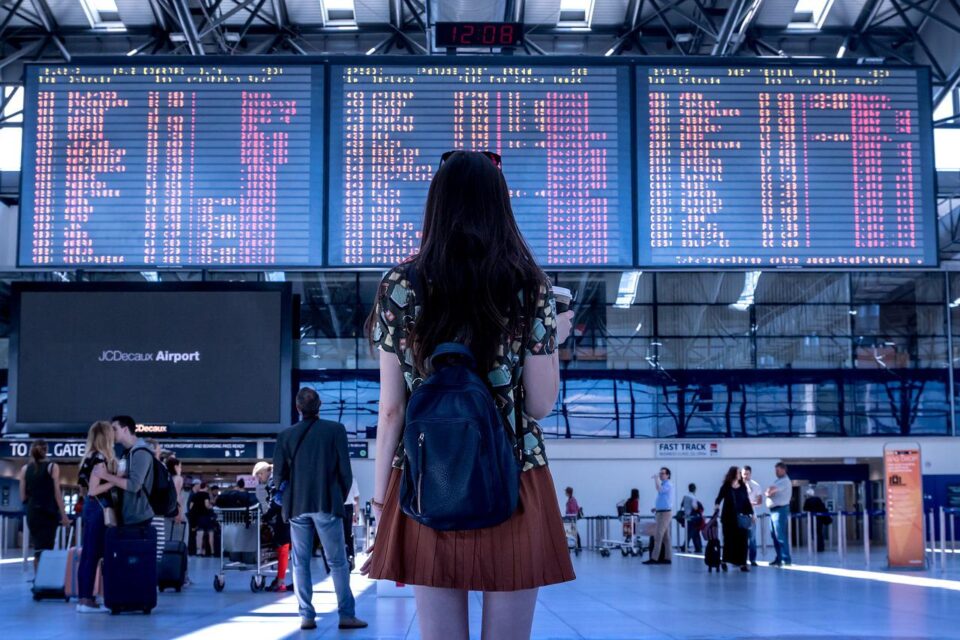
The U.S. Department of Transportation (DOT) has released a final regulation requiring airlines to quickly reimburse passengers with automatic cash refunds when owed, according to a statement made by the Biden-Harris Administration.
Under the new regulation, passengers will find it easier to get refunds when airlines dramatically alter or cancel flights, cause severe delays for checked baggage, or don’t supply the additional services they paid for.
According to a statement from the Biden-Harris Administration, the U.S. Department of Transportation (DOT) has published a final rule mandating airlines to promptly compensate customers with automatic cash refunds when they are eligible. The new rule would make it simpler for customers to receive refunds from airlines in cases when they drastically change or cancel flights, cause significant delays for checked luggage, or fail to provide the extra services they charged for.
Under the latest rule from the USDOT, passengers are guaranteed refunds in several scenarios:
- Canceled or Significantly Changed Flights: Passengers are entitled to refunds if their flight is canceled or significantly altered, including changes in departure or arrival times exceeding 3 hours domestically or 6 hours internationally, departures or arrivals from different airports, increased connections, downgrades in service class, or changes less accommodating to passengers with disabilities.
- Delayed Baggage Return: Passengers filing mishandled baggage reports can claim a refund for checked bag fees if their luggage is not returned within specific timeframes after flight arrival.
- Unprovided Extra Services: If airlines fail to deliver paid extra services like Wi-Fi, seat selection, or inflight entertainment, passengers can request refunds for those fees.
The final rule streamlines the refund process, ensuring it is:
- Automatic: Refunds are issued automatically without requiring passengers to request them.
- Prompt: Airlines must refund credit card purchases within seven business days and other payment methods within 20 calendar days.
- In Original Form of Payment: Refunds are provided in the original payment method used for purchase.
- Full Amount: Passengers receive full refunds minus the value of any portion of transportation already used, including government and airline fees.
Suggest banning family seating junk fees and ensuring that parents can travel with their kids at no additional cost. No airline promised to ensure fee-free family seating prior to efforts from President Biden and Secretary Buttigieg last year. Family seating is now guaranteed free of charge on four airlines, and the Department is working on a plan to eliminate family seating junk fees.
Propose to make passenger compensation and amenities mandatory so that travelers are taken care of when airlines cause flight delays or cancellations.
Airlines
The Nine Freedoms of the Air – Jetline Marvel
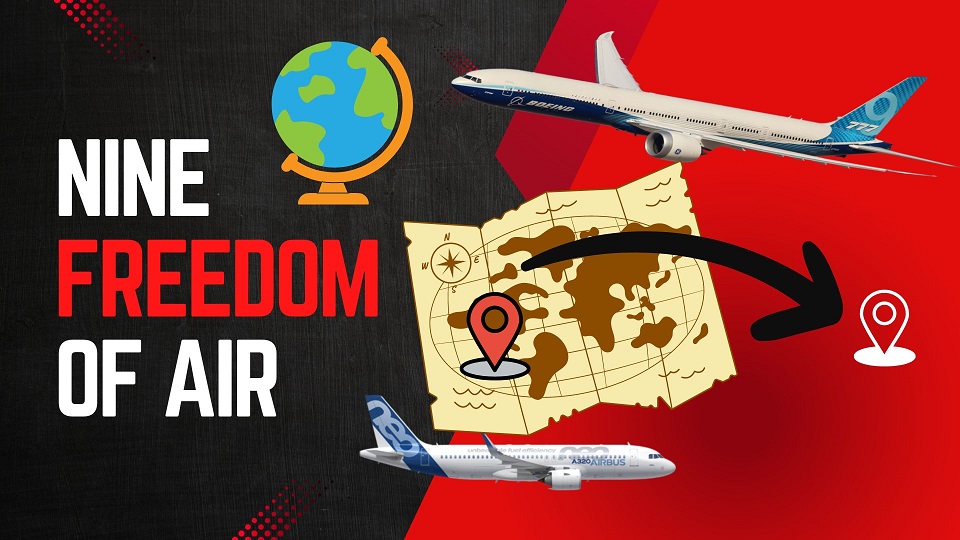
Most of us travel from one city to another city via road we need to get permission to that specific city if it is in another country like a visa or Road access permission to use its property for revenue purposes to carry passengers and Cargo. Similarly, In the airline Industry, it is also important that the Company have permission to fly and access that country whether it’s for stoppage flying above them, or Operating the passengers within that country This is called Freedom of the Air.
Some countries together they agree with certain conditions to access their Aerospace for to access for the airline to travel above their nation. If the bilateral is done for Their own countries’ airlines or other countries’ airlines. In this chapter, we understand how this thing is carried out. What all the condition has to look into that.
The Freedoms of the Air are international commercial aviation agreements (traffic rights) that grant a country’s airline(s) the privilege to enter and land in another country’s airspace. They were formulated in 1944 at an international gathering held in Chicago (known as the Chicago Convention) to establish uniformity in world air commerce. There are generally considered to be nine freedoms of the air.
Most nations of the world exchange first and second freedoms through the International Air Services Transit Agreement. The other freedoms,chase freedom airline miles when available, are usually established between countries in bilateral or multilateral air services agreements. The third and fourth freedoms are always granted together. The eighth and ninth freedoms (cabotage) have been exchanged only in limited instances
First Freedom:
The basic permission granted to an airline from one country (A) to fly through the airspace of another country (B)
Second Freedom:
The permission for a commercial airplane from country (A) to land and refuel (often called a technical stop) in another country (B).
Third Freedom :
The privilege for an airline to transport paying (Revenue) passengers from its home country (A) to another country (B).
Fourth Freedom
The rights for an airline to transport paying (Revenue )passengers from another country (B) to the airline’s home country (A).
Fifth Freedom
Fifth Freedom (also known as beyond rights): The rights for an airline to transport passengers from its home country (A) to a destination (B), then pick up and carry passengers to other international destinations (C).
Sixth Freedom:
Sixth Freedom (Combination of Third & Fourth Freedoms) The right for an airline to carry passengers or cargo between two foreign countries (B and C), provided the aircraft touches down in the airline’s home country (A).
Seventh Freedom:
The authorization for an airline to operate flights that start in a foreign country (B), skip its home country (A), and transport passengers to another international destination (C).
Eighth Freedom Air
The rights for an airline to transport passengers from one location within a country’s territory (B) to another point within the same country on a flight originating in the airline’s home country (A). This right is commonly referred to as cabotage and is notably scarce outside of Europe.
Ninth Freedom Air
The entitlement for an airline from a specific country (A) to begin a flight in a foreign country (B) and transport passengers from one location to another within that foreign country. This concept, also referred to as stand-alone cabotage, distinguishes itself from the traditional aviation definition of cabotage by not directly involving the airline’s home country.
Aviation
Air India’s B747 Makes Its Final Journey, Waving Farewell to Fans

In a poignant moment marking the end of an era in aviation history, Air India’s iconic Boeing 747 aircraft, affectionately known as the ‘Queen of the Skies,’ embarked on its ultimate journey from Mumbai’s international airport.
The departure, bound for Plainfield, USA, where it will undergo dismantling and part-stripping under the ownership of American AerSale, signals the closure of a storied chapter for the airline.
Once revered for transporting dignitaries ranging from prime ministers to presidents, the Boeing 747 has etched itself into aviation lore. Yet, as airlines worldwide pivot towards more contemporary and cost-effective aircraft, Air India’s decision to bid farewell to its remaining Boeing 747s reflects the pragmatic realities of today’s aviation landscape.
The sale of these majestic planes to AerSale represents a strategic move by Tata Group, Air India’s new custodian, towards optimizing operational efficiency and embracing modern industry standards. Out of the four aircraft sold, two will be repurposed into freighters, while the remaining pair will be meticulously disassembled to salvage valuable components.
The final flight from Mumbai witnessed a touching tribute as pilots performed a traditional ‘Wing Wave,’ symbolizing the conclusion of the Boeing 747‘s distinguished service with Air India. This poignant gesture encapsulates the deep sentiment attached to the aircraft’s departure and its significant contribution to the airline’s legacy.
As the Boeing 747 embarks on its journey to Plainfield, USA, nostalgia permeates the air, evoking memories of its maiden flight on March 22, 1971. Over five decades, Air India operated a total of 25 Boeing 747s, each leaving an indelible mark on the annals of aviation history.



